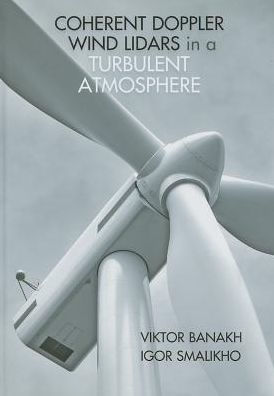Radio-physical tools for measuring atmospheric dynamics include sodars, Doppler radars, and Doppler lidars. Among these, coherent Doppler lidars (CDLs) have been considered the best for remote measurement of wind turbulence. This is important not only for understanding the exchange processes in the boundary layer, but also in the applied aspect, such as aviation safety. CDLs significantly extend possibilities of experimental investigation of not only wind turbulence, but also coherent structures such as aircraft wake vortices. The authors of this book conducted field tests of the developed methods of lidar measurements of wind velocity, atmospheric turbulence parameters, and aircraft wake vortices. This valuable resource, containing over 500 equations based on original results from the authors' work, gives professionals a comprehensive description of the operating principles of continuous wave and pulsed coherent Doppler lidars. This book studies the possibilities of obtaining information about wind turbulence from data measured by continuous wave and pulsed CDLs. The procedures for estimation are described, as well as algorithms for numerical simulation. Results on the vortex behavior and evolution are then presented.
Radio-physical tools for measuring atmospheric dynamics include sodars, Doppler radars, and Doppler lidars. Among these, coherent Doppler lidars (CDLs) have been considered the best for remote measurement of wind turbulence. This is important not only for understanding the exchange processes in the boundary layer, but also in the applied aspect, such as aviation safety. CDLs significantly extend possibilities of experimental investigation of not only wind turbulence, but also coherent structures such as aircraft wake vortices. The authors of this book conducted field tests of the developed methods of lidar measurements of wind velocity, atmospheric turbulence parameters, and aircraft wake vortices. This valuable resource, containing over 500 equations based on original results from the authors' work, gives professionals a comprehensive description of the operating principles of continuous wave and pulsed coherent Doppler lidars. This book studies the possibilities of obtaining information about wind turbulence from data measured by continuous wave and pulsed CDLs. The procedures for estimation are described, as well as algorithms for numerical simulation. Results on the vortex behavior and evolution are then presented.

Coherent Doppler Wind Lidars in a Turbulent Atmosphere
248
Coherent Doppler Wind Lidars in a Turbulent Atmosphere
248
Product Details
| ISBN-13: | 9781608076673 |
|---|---|
| Publisher: | Artech House, Incorporated |
| Publication date: | 08/28/2013 |
| Pages: | 248 |
| Product dimensions: | 7.20(w) x 10.20(h) x 0.90(d) |
